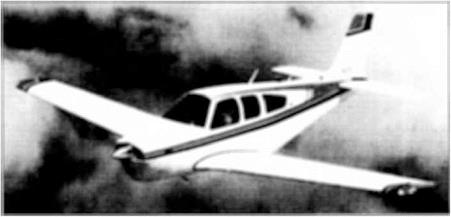Fundamentals of Inviscid,. Incompressible Flow
Theoretical fluid dynamics, being a difficult subject, is for convenience, commonly divided into two branches, one treating of frictionless or perfect fluids, the other treating of viscous or imperfect fluids. The frictionless fluid has no existence in nature, but is hypothesized by mathematicians in order to facilitate the investigation of important laws and principles that may be approximately true of viscous or natural fluids.
Albert F. Zahm, 1912 (Professor of aeronautics, and developer of the first aeronautical laboratory in a U. S. university, The Catholic University of America)
3.1 Introduction and Road Map
The world of practical aviation was born on December 17, 1903, when, at 10:35 A. M., and in the face of cold, stiff, dangerous winds, Orville Wright piloted the Wright Flyer on its historic 12-s, 120-ft first flight. Figure 3.1 shows a photograph of the Wright Flyer at the instant of lift-off, with Wilbur Wright running along the right side of the machine, supporting the wing tip so that it will not drag the sand. This photograph is the most important picture in aviation history; the event it depicts launched the profession of aeronautical engineering into the mainstream of the twentieth century.1
I 1 See Reference 2 for historical details leading to the first flight by the Wright brothers.

The flight velocity of the Wright Flyer was about 30 mi/h. Over the ensuing decades, the flight velocities of airplanes steadily increased. By means of more powerful engines and attention to drag reduction, the flight velocities of airplanes rose to approximately 300 mi/h just prior to World War II. Figure 3.2 shows a typical fighter airplane of the immediate pre-World War II era. From an aerodynamic point of view, at air velocities between 0 and 300 mi/h the air density remains essentially constant, varying by only a few percent. Hence, the aerodynamics of the family of airplanes spanning the period between the two photographs shown in Figures 3.1 and 3.2 could be described by incompressible flow. As a result, a huge bulk of experimental and theoretical aerodynamic results was acquired over the 40-year period beginning with the Wright Flyer—results that applied to incompressible flow. Today, we are still very interested in incompressible aerodynamics because most modern general aviation aircraft still fly at speeds below 300 mi/h; a typical light general aviation airplane is shown in Figure 3.3. In addition to low-speed aeronautical applications, the principles of incompressible flow apply to the flow of fluids, for example, water flow through pipes, the motion of submarines and ships through the ocean, the design of wind turbines (the modem term for windmills), and many other important applications.
For all the above reasons, the study of incompressible flow is as relevant today as it was at the time of the Wright brothers. Therefore, Chapters 3 to 6 deal exclusively with incompressible flow. Moreover, for the most part, we ignore any effects of friction, thermal conduction, or diffusion; that is, we deal with inviscid incompressible flow in these chapters.[5] Looking at our spectrum of aerodynamic flows as shown in Figure 1.38, the material contained in Chapters 3 to 6 falls within the combined blocks D and E.
|
Figure 3.2 The Seversky P-35, fCourtesy of the U. S. Air Force.] |
|
Figure 3.3 The Beechcraft Bonanza F33A. (Courtesy of Beechcraft. j |
The purpose of this chapter is to establish some fundamental relations applicable to inviscid, incompressible flows and to discuss some simple but important flow fields and applications. The material in this chapter is then used as a launching pad for the airfoil theory of Chapter 4 and the finite wing theory of Chapter 5.
A road map for this chapter is given in Figure 3.4. There are three main avenues: (1) a development of Bernoulli’s equation, with some straightforward applications;
|
Figure 3.4 Road map for Chapter 3. |
(2) a discussion of Laplace’s equation, which is the governing equation for inviscid, incompressible, irrotational flow; (3) the presentation of some elementary flow patterns, how they can be superimposed to synthesize both the nonlifting and lifting flow over a circular cylinder, and how they form the basis of a general numerical technique, called the panel technique, for the solution of flows over bodies of general shape. As you progress through this chapter, occasionally refer to this road map so that you can maintain your orientation and see how the various sections are related.
















